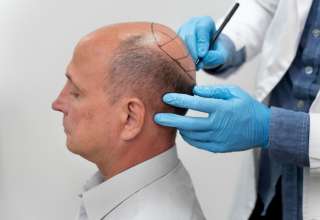Your body doesn’t get bigger and stronger in the gym. Those things should take place during your post-workout recovery period. I say should because they are not automatic. In fact, unless you are using the right muscle recovery techniques, you will actually end up weaker and smaller than you were before you began your workout. In this article, we reveal 4 essential muscle recovery techniques that will ensure that you are getting the benefit that your hard work in the gym deserves.
Active Recovery
The term active recovery has become quite trendy in fitness circles recently. Yet, the concept has been around for decades. It simply involves doing some light exercise on the days that you are not performing your scheduled workouts. Research has shown that doing so will help to offset the effects of delayed onset muscle soreness and speed up the muscle recovery process.
Active recovery may involve doing something completely unrelated to your normal workouts. For example, if your training sessions involve working out with weights in a gym, you could have a game of tennis as part of your active recovery. Doing something different from your normal training can be mentally refreshing, helping to offset training monotony.
Your active recovery should involve low impact movement and shouldn’t last much more than half an hour.
Prioritize Sleep
The majority of your workout muscle recovery takes place during the hours that you are sleeping. When you are in rapid eye movement (REM) sleep, your body optimizes its release of the key muscle-building hormones testosterone and human growth hormone (HGH). That is when the tiny microtears that have been caused to your muscle tissue as a result of your workout are able to repair themselves.
The problem is that many people don’t spend enough time in REM sleep in order to allow for the release of their anabolic hormones. If you are getting up more than a couple of times each night, then you will struggle here. When you eventually go back to sleep, you will have to cycle through the 3 non-REM stages of sleep, which takes about 90 minutes before you enter into REM sleep.
In order to optimize your sleep, plan to get to bed, and get up at the same time each day. You should also make your bedroom as dark, cool, and quiet as you can. Keep the bedroom reserved as your sleeping domain. Try not to use it during the day and do not turn it into an evening entertainment zone. That means that you need to discipline yourself to keep your computer technology, including your phone, out of the bedroom!
Another thing that can help you to get a good night’s sleep is to refrain from stimulants like caffeine after around 4 o’clock in the afternoon. You should also try not to work out in the evening. If your schedule dictates that you have to train in the evening, allow yourself at least 2 hours of inactivity between the end of your workout and bedtime.
Nutrition
When you walk out of the gym, your body will have used up its stores of glycogen, which is then broken down form of carbohydrates. Glycogen is the body’s main form of energy. Your immediate need after the workout is to replace that energy. When you do, you will feel more energized and your muscles will feel and look fuller.
The best way to get the needed glycogen post-workout is to take a post-workout protein shake that has a 50/50 blend of whey protein and simple carbs, such as maltose or dextrose. The carbs will replenish the glycogen levels while the whey protein will deliver essential amino acids.
Look out for a post-workout protein powder that contains the following ingredients . . .
- Whey Protein Isolate
- Fast Digesting Carbs
- Branch Chain Amino Acids
- Creatine
In terms of whole foods, your post-recovery recovery foods should include such fast-digesting carb sources as bananas, whole-grain toast with jelly, and peaches.
Myofascial Release
Massaging the muscles after a workout is one of the most beneficial things you can do to relax the muscles, work out any painful niggles, and promote recovery. Gone are the days of having to pay for a masseuse to do the job for you. Nowadays you can do it yourself with the aid of a foam roller.
A foam roller is a plastic or foam covered cylinder that is positioned between your body and a hard surface. Some types of foam rollers have protruding knobs that are designed to penetrate your muscle tissue. By rolling up and down on the roller, you are able to provide the target muscle with an effective soothing massage
Foam Rolling has been shown to lighten up the thick lubricating gel which muscle fascia is bathed in. This improves the looseness and movability of the muscle fiber. The process of foam rolling also kneads the muscle, improving its quality and ironing out the painful niggles that have resulted from the workout.











